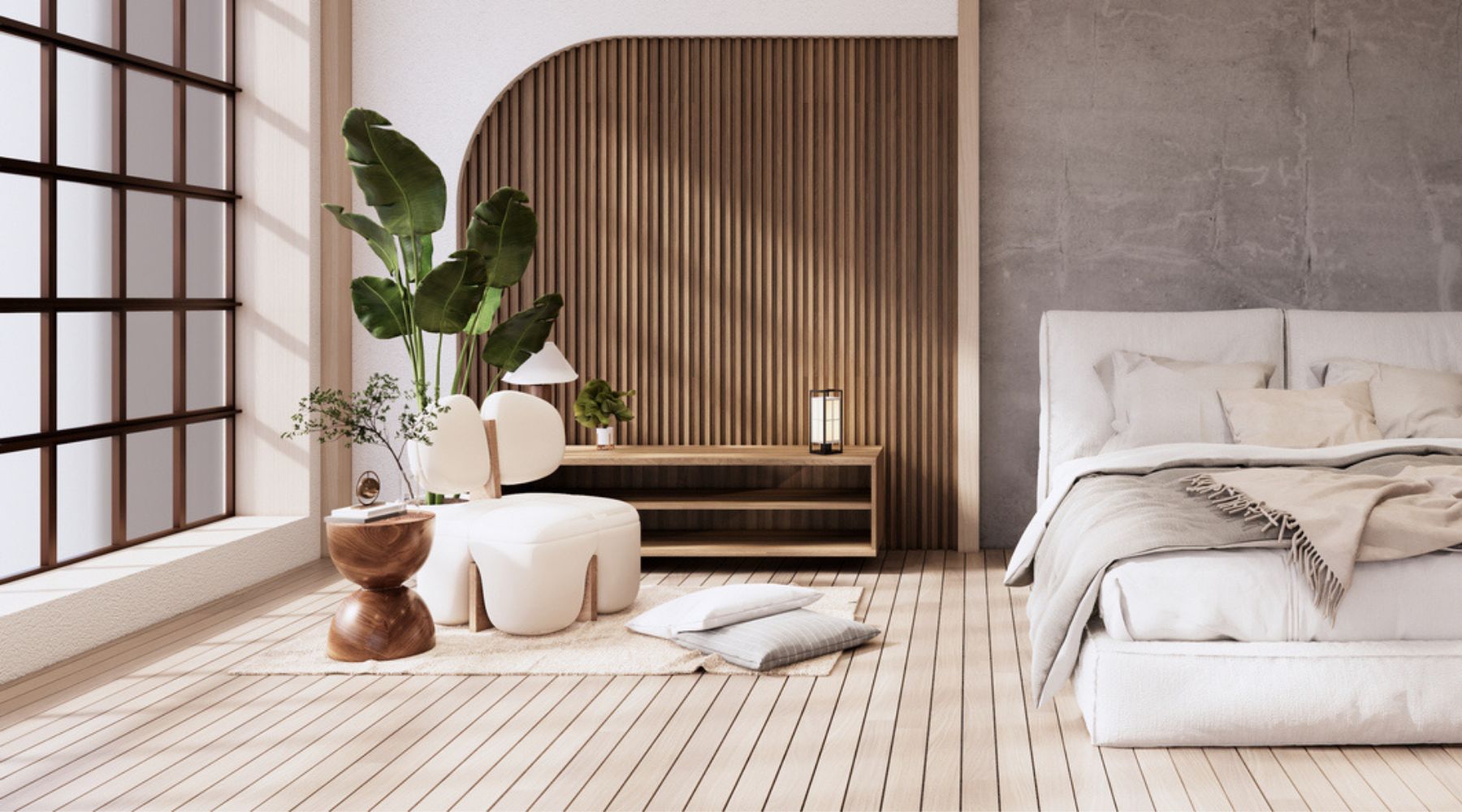
Wabi-Sabi and Scandinavian Design: A Match Made in Minimalist Heaven
Like hygge, wabi-sabi is a concept that has become a trend in the last few years. However—also, like hygge—it is often misunderstood, or used as a buzzword to sell products with a certain aesthetic without consideration for its cultural foundations.
Here, we’ll dig deeper into the principles of wabi-sabi, compare them to Scandinavian design principles, and talk about how these two design philosophies from across the world can come together to create beautiful, purposeful spaces.
What is Wabi-Sabi?
Wabi-sabi originated in Japan and has no direct translation into English. In fact, wabi-sabi comprises two opposing concepts that come together to form a whole, like yin and yang. “Wabi” signifies simple daily living and the appreciation of beauty; “sabi” signifies the wear and decay that happen with time. Putting them together, then, we see that wabi-sabi is the contentment you feel in appreciating things that are old, transient, and imperfect, such as fallen cherry blossom petals or temple steps that have been worn by many thousands of feet.
The concept of wabi-sabi originated in Taoism during China’s Song dynasty (960-1279) and was further developed by Zen Buddhist monks, particularly Sen no Rikyu. Rikyu transformed the Japanese tea ceremony into an art form, with wabi and sabi as its aesthetic ideals. Before Rikyu, Japanese tearooms were large and lavish with gold and silk; under his influence, they became smaller and furnished with natural materials such as clay, wood, and bamboo.

What is Scandinavian Design?
Scandinavian design comes from the Scandinavian countries of Denmark, Norway, and Sweden. Though there are differences between individual countries, they share many similarities with each other—and, curiously, with Japanese design.
What we now call Scandinavian design originated in the mid-20th century and was called Functionalism. It emphasizes ease of use, craftsmanship, and a sense of timelessness, both in aesthetics and durability.
Interestingly, Japan and Denmark signed a Treaty of Friendship in 1867, which established close diplomatic, economic, and cultural ties between the two nations. It has long been said that this is the cause of many similarities between Japanese and Scandinavian design, such as simplicity, clean lines, and the use of natural materials.
The past few years have seen the rise of Japandi—a Japanese-Scandinavian fusion style. Though broadly similar to Scandiavian design, it uses elements associated with Japanese interiors, such as warm, earthy colours, dark wood, and bamboo.
How to Incorporate Wabi-Sabi into Scandinavian Design
However, you don’t need to go full-on Japandi to use wabi-sabi in your interiors. The concept is universal and can just as easily apply to any Scandinavian interior, enhancing its warmth and simplicity. These are just a few ways that you can use wabi-sabi with Scandinavian interior design:
- Use antique and second-hand furniture. Antique furniture carries a story in every scratch, dent, stain, and watermark. Rather than viewing these marks as flaws, see them as signs of a life well lived—welcoming character and history into your home for a second chapter.
- Bring plants and flowers into your home. Living things are imperfect and impermanent by nature, which is the essence of wabi-sabi. You could even try your hand at ikebana: the Japanese art of flower-arranging. All you’ll need is a pinholder base, or kenzan (which translates to “sword mountain”), and a shallow bowl filled with water. Gather your items (a mix of flowers and foliage is best), cut them to the desired length, and pin them to the kenzan in whatever way you think looks harmonious. Advanced ikebana practitioners use hidden wires to bend the stems just so but we encourage you to embrace wabi-sabi and let them fall where they may. Once the flowers start to decay, let the fallen petals sit on the water rather than immediately clearing them away.

- Repair, don’t replace. The Japanese art of kintsugi—repairing cracked ceramics with gold—is the epitome of wabi-sabi. Everything breaks in time—instead of mourning that it’s broken, see it as an opportunity to create something different but still beautiful. Search for a kintsugi professional in your area or buy a DIY kit online, though do be aware that these usually don’t contain real gold.
With increasing awareness of our environmental responsibility comes an increasing number of ways to recycle, upcycle, and otherwise repurpose broken items, in ways that—as with kintsugi—are a feature in themselves. In Malmö, Sweden, people take their old clothes to Ateljé Laga, where designer Veronica Luna fixes them with colorful embroidery and patches. You can apply that concept to frayed rugs, curtains, upholstery, or bedding—order a pack of our organic linen bedding swatches for some conveniently sized patches to use in your own projects!
- Support local artisans. Handmade items contain imperfections, which make them one of a kind. Look out for ceramics made using reactive glaze, popular in both Japan and Scandinavia. It undergoes a chemical reaction during firing, resulting in a unique speckled and streaked appearance. The artist cannot fully control how it will turn out, which is part of its beauty.
Can’t find the perfect piece? Make your own. It’s never been easier to create your own art; you’ll find millions of tutorials online, plus pottery, painting, and sewing classes in most cities. If you’re a perfectionist, making your own art can be surprisingly stressful—see this as a chance to practice wabi-sabi and embrace mistakes.
- Use “imperfect” materials. Wabi-sabi principles encourage the use of natural materials. But since the advent of mass production, many materials with natural origins are neither natural-looking nor sustainable. Ditch the uniformity of unsustainable cotton and instead use textiles with a visible weave and beautiful, natural creases, like organic linen sheets.
Our European bedding is made from sustainable flax linen, which will look perfectly imperfect in your home. It’s made ethically at a small scale and is hand-finished by artisans in the Portuguese town of Guimaraes. Buy a solid-color set and admire its natural weft and weave or choose one of our nature-inspired, printed Scandinavian-style bedding sets with nature-inspired designs.
Does the concept of wabi-sabi appeal to you? If so, how will you be using it in your home and life? Let us know on Instagram, Pinterest, Facebook or X!






Leave a comment
This site is protected by hCaptcha and the hCaptcha Privacy Policy and Terms of Service apply.